
Subscribe to continue reading
Subscribe to get access to the rest of this post and other subscriber-only content.

Subscribe to get access to the rest of this post and other subscriber-only content.
My Flame Vine is finally blooming, at least in spots. In the past it covered my back wall and bloomed in January, like everything is different this year! But even with fewer flowers and later, it is still one of my favorites! 🙂 “Flame Vine” is the most common English name, while in Costa Rica Spanish, it is called “Triquitraque” and the scientific name is “Pyrostegia venusta.” 🙂
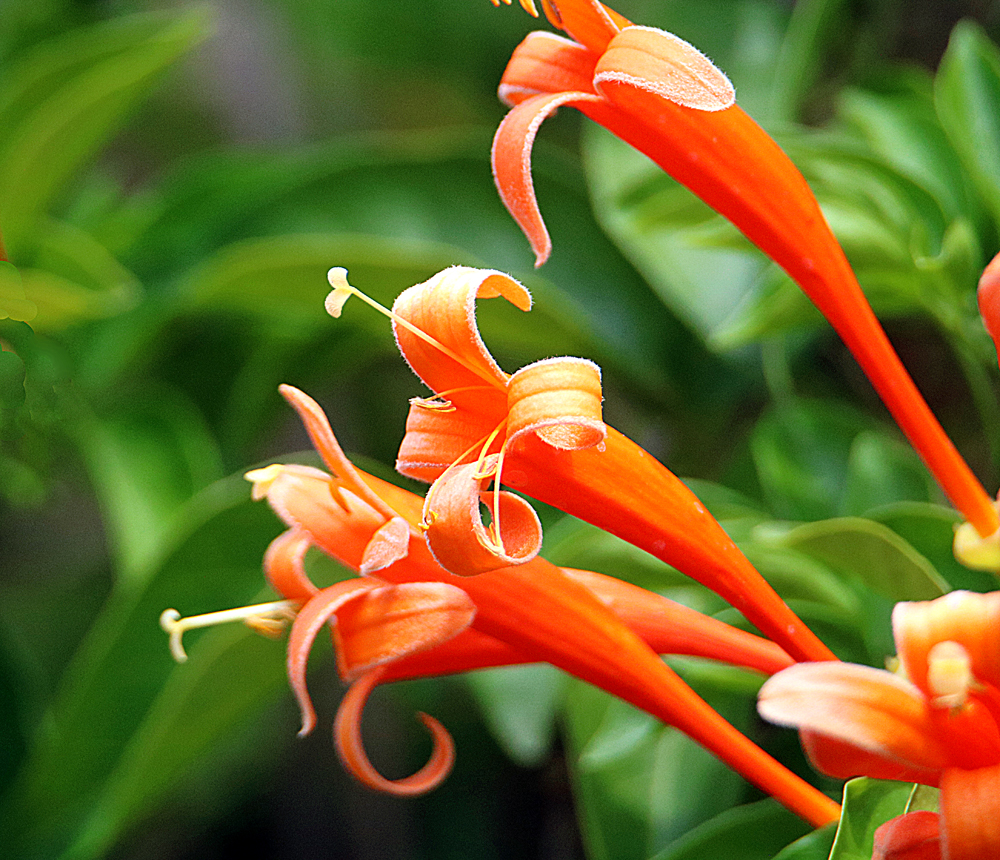
¡Pura Vida!
is the Costa Rican Spanish name for the English-named Clay-colored Thrush. (my gallery link) This is the bird that gently wakes me up each morning singing, and, as tradition has it, he/she is singing in the rains for the beginning of our winter or rainy season in May.
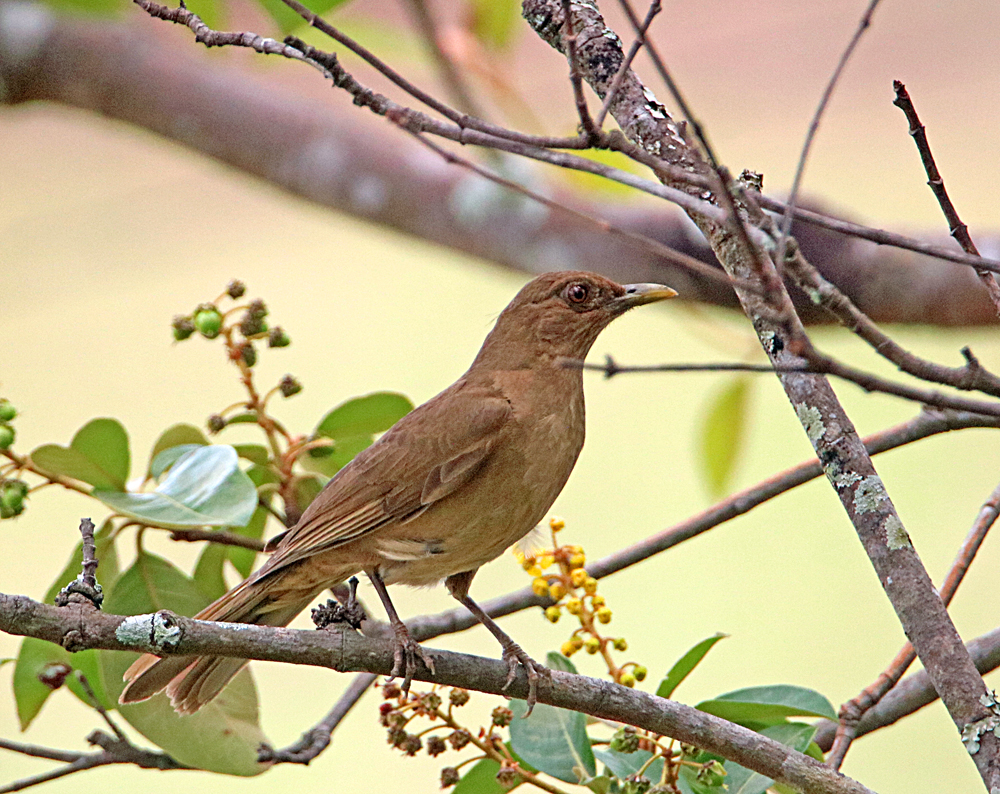
¡Pura Vida!
The flowers of the Frangipani – Plumeria rubra (Wikipedia link) in a neighbor’s yard that I snapped from my driveway. This flowering plant is native to Central America but has been cultivated in other tropical areas around the world now. We even had some in The Gambia when I lived there back in 1999-2002! 🙂
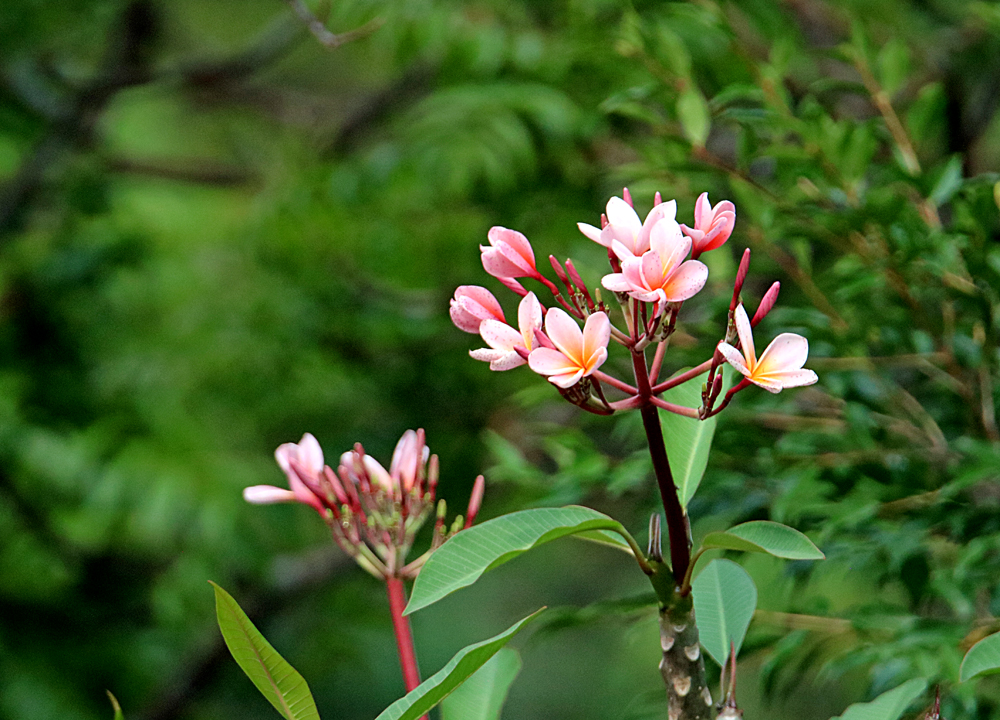
See more flowers in my Flora & Forest Galleries.
¡Pura Vida!
“The answer, my friend, is blowin’ in the wind
The answer is blowin’ in the wind” (apologies to Bob Dylan)
Some large Yellows are flying up in the tree limbs and other smaller yellows, whites and skippers I’ve seen down lower without ever stopping for a photo! 🙂 But Friday I did manage to get a couple of shots of this Polydamas Swallowtail, Battus polydamas (my gallery link) quickly stopping by both the Porter Weed (below) and the Plumbago (above), one of the few who land on that sticky flower! (Maybe the ‘sticky’ keeps him from blowing away!?) 🙂 And though that answer is not as philosophical as Bob Dylan’s, there simply will not be many butterflies until this wind quits blowing! 🙂
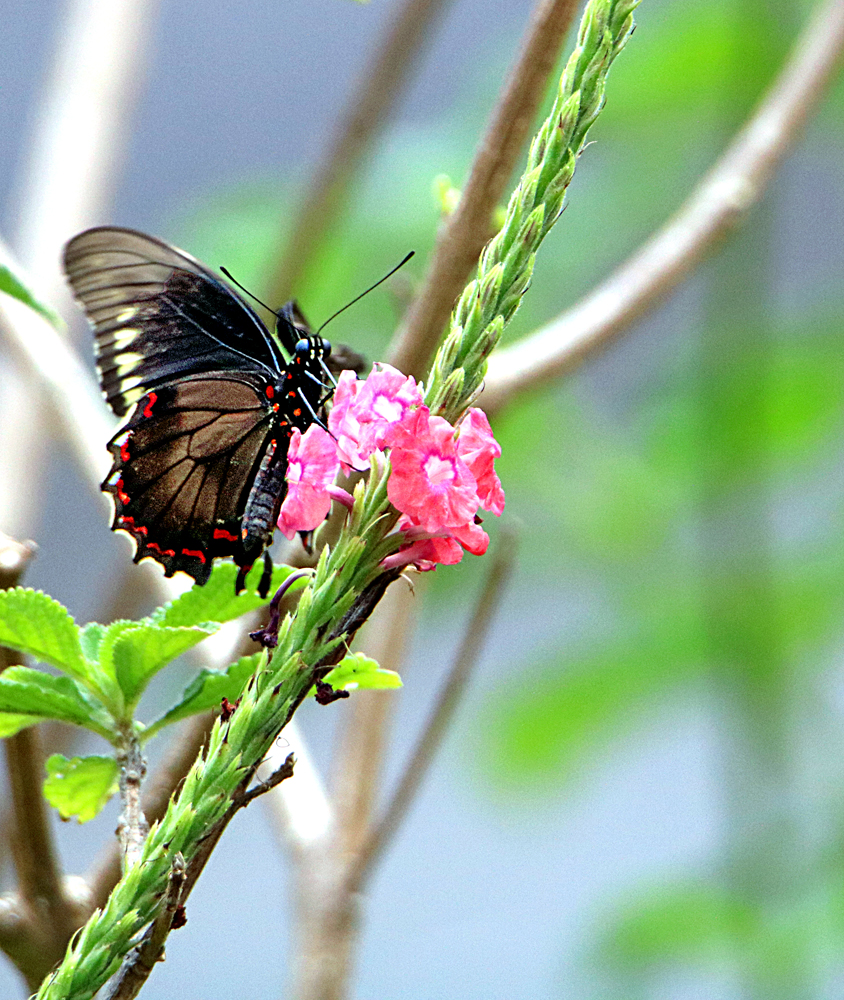
Another “uncommon” bird found only in Central America from Eastern Mexico to Western Costa Rica, the Canivet’s Emerald, Cynanthus canivetii (eBird link) with some of my other earlier garden shots in my Canivet’s Emerald Gallery. I mostly get females (white chest) while in my first year I had a male (green chest). And for my Costa Rica readers, this species appears only on the Pacific Slope, while in Mexico to Honduras it is only on the Caribbean Slope. 🙂 Here’s three shots from yesterday in my garden . . .
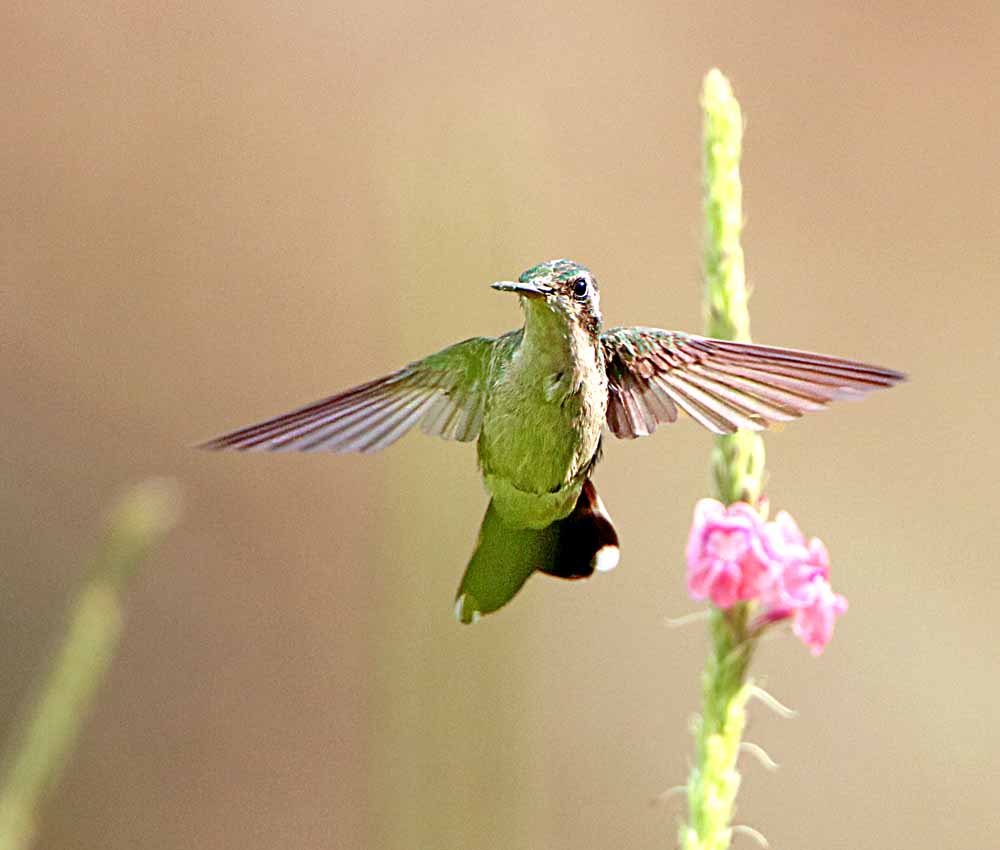
A small group of young Gray-headed Chachalacas, Ortalis cinereiceps (linked to eBird) landed in my trees yesterday and did a lot of chattering before flying on elsewhere. The wind doesn’t seem to bother larger birds as much as the smaller ones. And this bird lives only between Guatemala and Columbia! Here’s 3 different views . . .
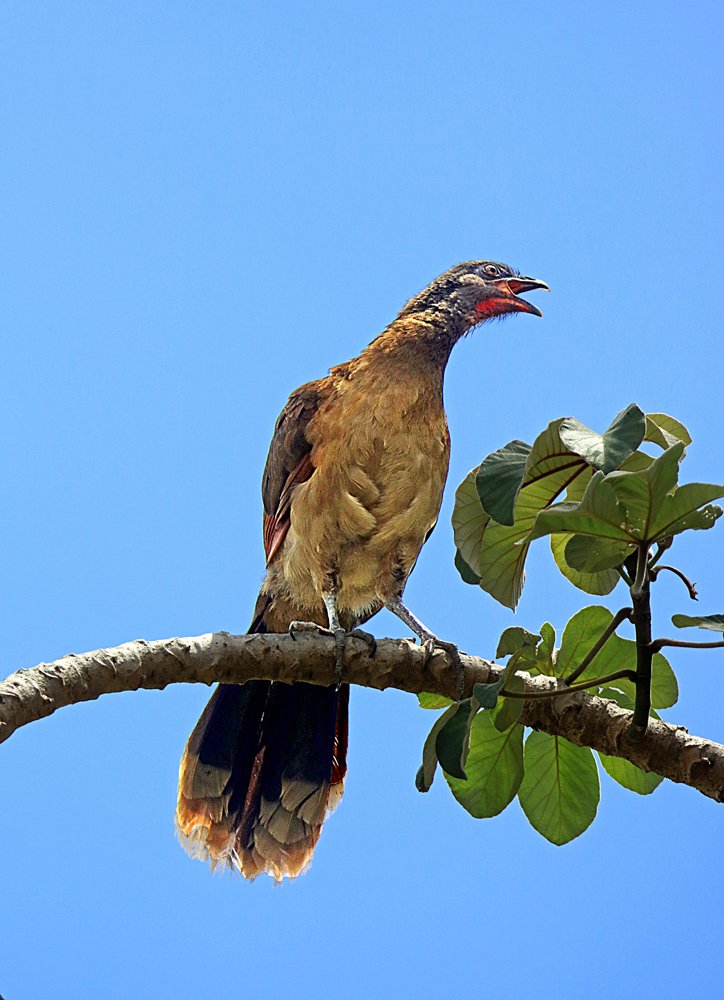
The sun rises in the east behind other mountains that are behind the one that my house is on the west side of. 🙂 Simply put, I cannot see much of a sunrise from my house or terrace that faces W/NW where the vista of little mountains I often share are located. But when I am not sleeping late, I can get out on my terrace and get what I call a “reflected sunrise” on those hills in the W/NW. This past week I’ve been sleeping as late as I could to help cure my sick stomach which is now finally well! (I think!) But these two early morning “reflected sunrise” shots were made earlier in March. The feature photo at top is a panorama of three shots on my Canon 750D and this shot below for email version was a quick snap on my cheap Samsung Cellphone! 🙂
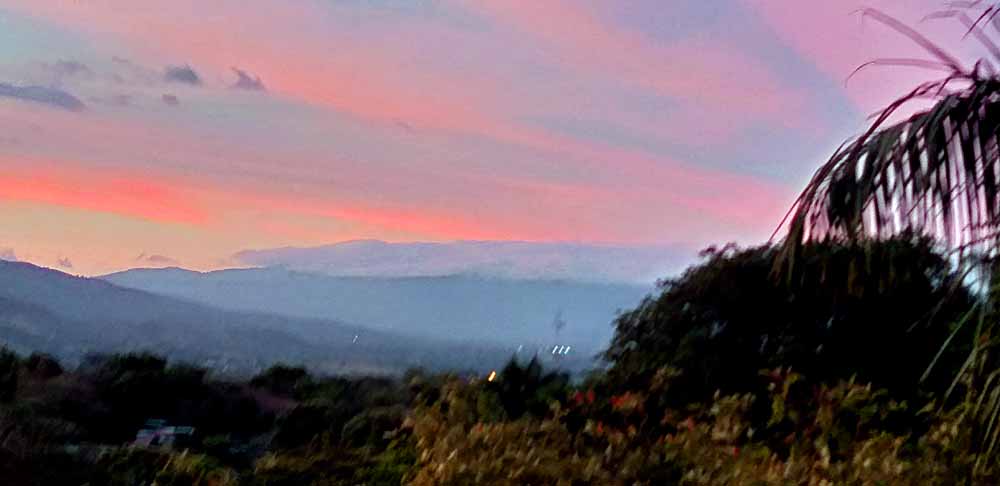
Corteza Amarilla, Yellow Cortez Tree, Tabebuia ochracea, (Wikipedia link) is visible almost everywhere in Costa Rica this time of year, but only for a very few days or weeks, then the bright yellow, flowers-only trees become another beautiful green tree, blending in with the landscape they now contrast with. This week I’ve snapped a few shots of some around Atenas and you can see more of my past photos of them in the gallery labeled simply Yellow Trees! (which also includes Yellow-Bell Trees) 🙂 Below this one photo for the email version of this post are two galleries, one for my neighborhood and one for the central church at Central Park Atenas.
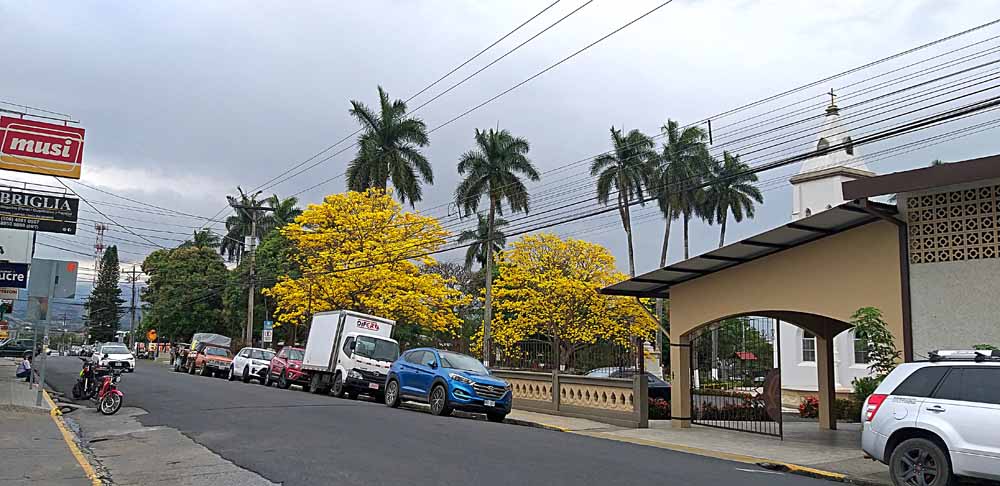
One of the common Skippers all over Costa Rica is the Teleus Longtail (my gallery link), and he is just one of about 20 different “Longtails!” Here’s a couple of shots of one in my garden recently on a less windy day:
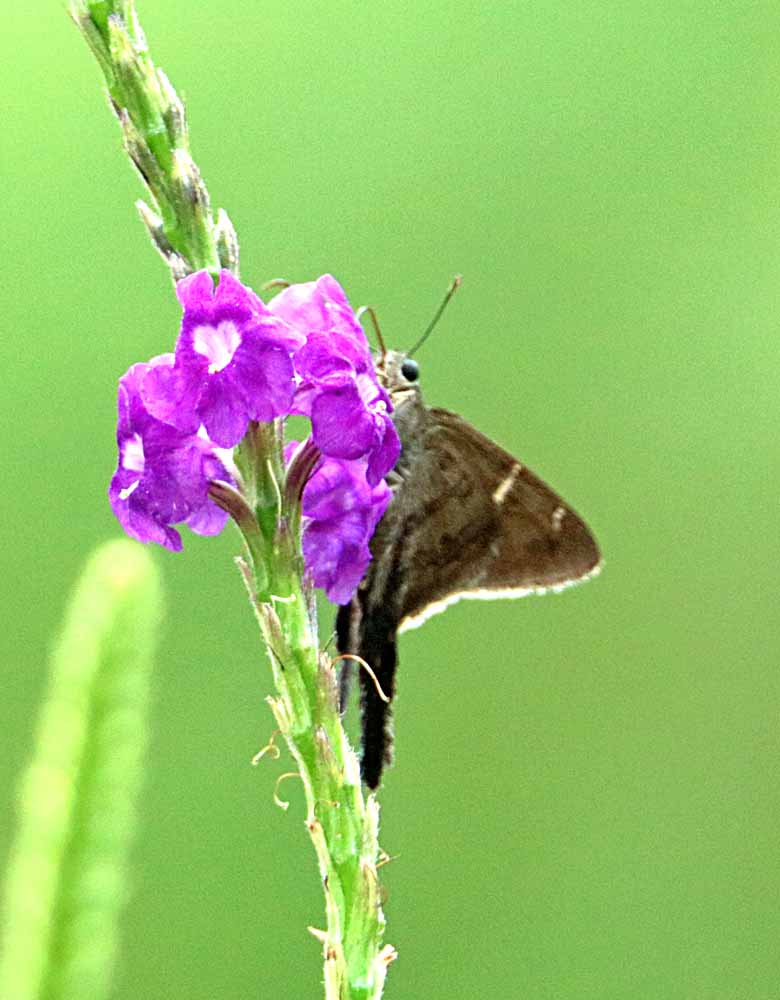
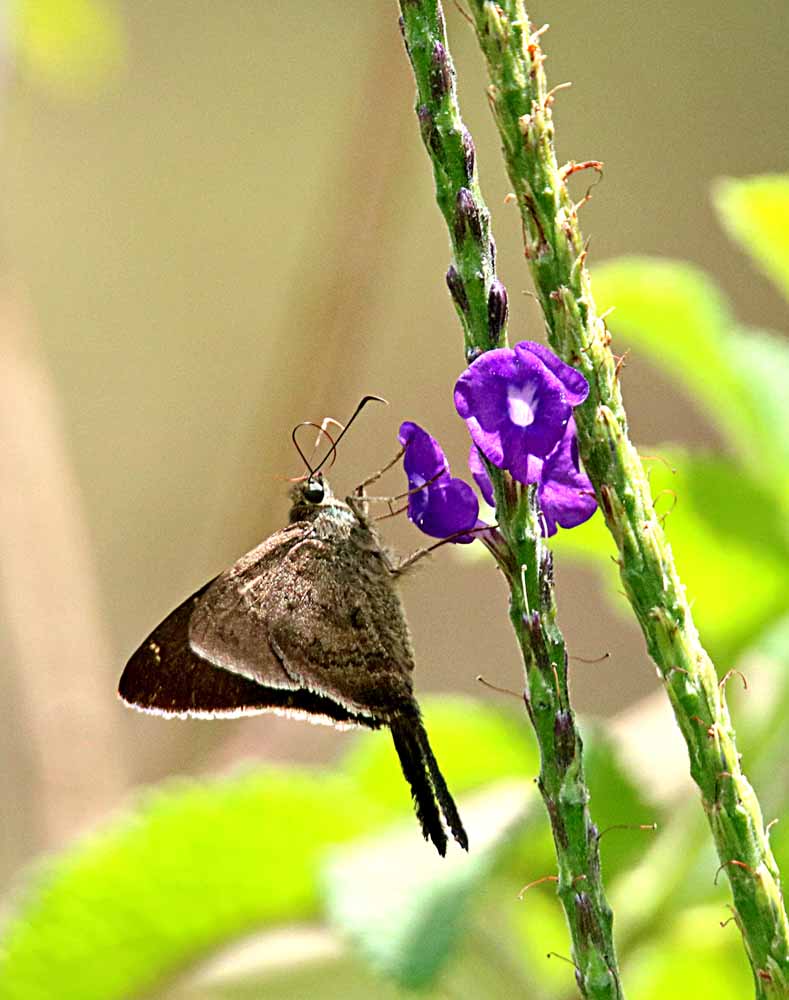
¡Pura Vida!